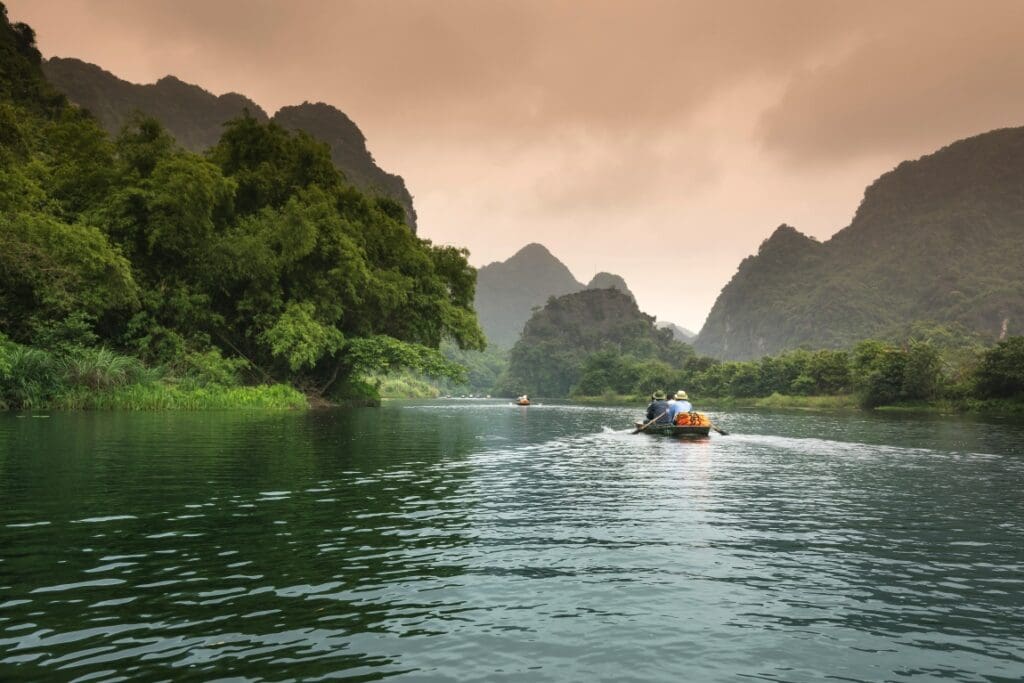By Daniel Strain, University of Colorado at Boulder
In the “sky islands” of the Soutpansberg Mountains of South Africa, two closely related species of primate jostle for space. One is the thick-tailed greater galago (Otolemur crassicaudatus), also known as a bushbaby, which is about the size of a large cat and known for its high-pitched, wailing call. The second primate, the southern lesser galago (Galago moholi), boasts big ears and eyes and is small enough to fit in the palm of your hand.
In new research, a team led by CU Boulder primatologist Michelle Sauther turned to these animals to explore an overlooked question in conservation: Does being big or small change how an animal adapts to extreme temperatures?
The group’s findings suggest that small animals like the lesser galago could face extra challenges as the planet’s climate continues to shift.
“Body size really does affect everything,” said Sauther, professor in the Department of Anthropology. “How big you are affects your life history. It affects when you reproduce. It affects how long you live.”
She and her colleagues published their findings recently in the International Journal of Primatology.
The study highlights the wild ecosystem diversity throughout the Lajuma Research Centre in the Soutpansberg Mountains. In this misty landscape, flowering plants and lichen abound, and annual temperatures can swing from near freezing in the winter to 100 degrees Fahrenheit in the summer.
Sauther and colleagues set out in the dead of night to track greater and lesser galagos in the treetops. They discovered it may not pay to be small. The lesser galagos, unlike their bigger cousins, seemed to have to hunt for food in all weather conditions, even during periods that were very hot or cold—giving them little respite from harsh conditions.
For the primatologist, the study is another reminder that small animals need protection, too.
“In conservation, we tend to focus a lot on lemurs, gorillas, chimpanzees,” she said. “But we also have to think about the implications of climate change for these smaller and nocturnal species, which most people don’t know much about.”
Caffeinated primates
Think of the new study as a tale of two primates. On the surface, the greater and lesser galagos seem to be remarkably similar: They both spend their lives almost entirely in the trees and are active at night, when they hunt for insects and lick up gum from acacia trees.
But look a little closer, and you can spot the differences.
“These little guys look like they’ve drank 50 cups of coffee. They’re bouncing everywhere,” Sauther said. “The bigger ones seem to just sit there and look at you.”
To discover how these animals divvy up the forests of Lajuma, she and her colleagues walked the same paths through the reserve for 75 nights over the span of a year. They searched for galagos by shining a red light into the trees to spot glowing eyes, then observed the primates using a thermal imaging camera.
The team included James Millette, who earned his doctorate in anthropology from CU Boulder in 2016. Researchers from the University of Pretoria and University of Venda in South Africa and the University of Burgundy in France also participated.
“At night, because you can’t see much, you start hearing all these things that you just would never hear otherwise—a lot of insects, a lot of animal calls,” Sauther said. “Once in a while, you’ll run into a leopard.”
When the researchers weren’t dodging big cats, however, a troubling trend emerged.
Some like it hot?
Greater galagos, the group found, tended to be awake and active during milder weather and were rarely out at temperatures above 75 degrees Fahrenheit. The lesser galagos, in contrast, were much more active in hot and cold weather. They could be spotted jumping through trees even when the temperature rose to 79 degrees Fahrenheit or dropped below 40 degrees Fahrenheit.
Sauther suspects that this disparity comes down to one thing: ravenous appetites.
Like many small mammals, lesser galagos, which weigh just 150 grams, or less than an aluminum can, have fast metabolisms. That means they need to eat—all the time. Greater galagos, in contrast, can store more body fat, so they can afford to rest during extreme temperatures. Both species could also struggle to adapt as Lajuma grows even warmer, Sauther said. She noted that neither primate species is currently recognized as endangered but they face growing pressures from a range of factors, including expanding networks of roads across South Africa and the exotic pet trade.
She hopes the new study will inspire more research on these adorable, if hard to spot, animals.
“We’re worried about these stealth changes that may be happening among species like these,” Sauther said. “We hear a lot from people, ‘I used to see them a lot on my farm, but now I don’t.”
This article is republished under a Creative Commons Attribution 4.0 International License. Read the original article.
(More information: Michelle L. Sauther et al, Environmental Effects on Nocturnal Encounters of Two Sympatric Bushbabies, Galago moholi and Otolemur crassicaudatus, in a High-Altitude South African Northern Mistbelt Montane Habitat, International Journal of Primatology (2024). DOI: 10.1007/s10764-024-00427-5; Featured image: A galago was observed at night using a scientific thermal imaging camera. Credit: Michelle Sauther | CC BY 4.0)




